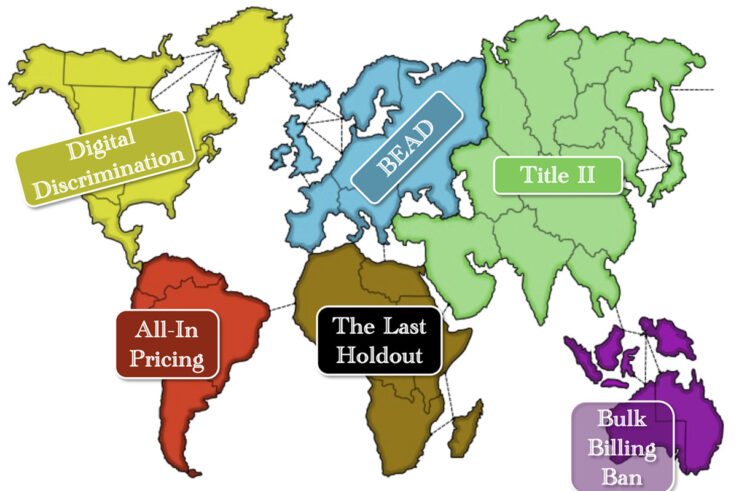A basic premise of antitrust law (also called competition law) is that competition among private entities enhances economic welfare by reducing costs, increasing efficiency, and spurring innovation. Government competition agencies around the world also compete, by devising different substantive and procedural rules to constrain private conduct in the name of promoting competition. The welfare implications of that form of inter-jurisdictional competition are, however, ambiguous. Public choice considerations suggest that self-interested competition agency staff have a strong incentive to promote rules that spawn many investigations and cases, in order to increase their budgets and influence. Indeed, an agency may measure its success, both domestically and on the world stage, by the size of its budget and staff and the amount of enforcement activity it generates. That activity, however, imposes costs on the private sector, and may produce restrictive rules that deter vigorous, welfare-enhancing competition. Furthermore, and relatedly, it may generate substantial costs due to “false positives” – agency challenges to efficient conduct that should not have been brought. (There are also costs stemming from “false negatives,” the failure to bring welfare-enhancing enforcement actions. Decision theory indicates an agency should seek to minimize the sum of costs due to false positives and false negatives.) Private enforcement of competition laws, until recently largely relegated to the United States, brings additional costs and complications, to the extent it yields ill-advised lawsuits. Thus one should cast a wary eye at any increase in the scope of enforcement authority within a jurisdiction, and not assume automatically that it is desirable on public policy grounds.
These considerations should be brought to bear in assessing the implications of the 2014 European Union (EU) Damages Actions Directive (Directive), which is expected to yield a dramatic increase in private competition law enforcement in the EU. The Directive establishes standards EU nations must adopt for the bringing of private competition lawsuits, including class actions. The 28 EU member states have until December 27, 2016 to adopt national laws, regulations, and administrative provisions that implement the Directive. In short, the Directive (1) makes it easier for private plaintiffs to have access to evidence; (2) gives a final finding of violation by a national competition agency conclusive effect in private actions brought in national courts and prima facie presumptive effect in private actions brought in other EU nations; (3) establishes clear and uniform statutes of limitation; (4) allows both direct and indirect purchasers of overpriced goods to bring private actions; (5) clarifies that private victims are entitled to full compensation for losses suffered, including compensation for actual loss and for loss of profit, plus interest; (6) establishes a rebuttable presumption that cartels cause harm; and (7) provides for joint and several liability (any participant in a competition law infringement will be responsible towards the victims for the whole harm caused by the infringement, but may seek contribution from other infringers).
By facilitating the bringing of lawsuits for cartel overcharges by both direct and indirect purchasers (see here), the Directive should substantially expand private cartel litigation in Europe. (It may also redirect some cartel-related litigation from United States tribunals, which up to now have been the favorite venues for such actions. Potential treble damages recoveries still make U.S. antitrust courts an attractive venue, but limitations on indirect purchaser suits and Sherman Act jurisdictional constraints requiring a “direct, substantial and reasonably foreseeable effect” effect on U.S. commerce create complications for foreign plaintiffs.) Given the fact that cartels have no redeeming features, this feature may be expected to increase disincentives for cartel conduct and thereby raise welfare. (The degree of welfare enhancement depends on the extent to which legitimate activity may be misidentified as cartel conduct, yielding “false positive” damage actions.)
The outlook is less sanguine for non-cartel cases, however. The Directive applies equally to vertical restraints and abuse of dominance cases, which are far more likely to yield false positives. In my experience, EU enforcers are more comfortable than U.S. enforcers at pursuing cases based on attenuated theories of exclusionary conduct that have a weak empirical basis. (The EU’s continued investigation of Google, based on economically inappropriate theories that were rejected by the U.S. FTC, is a prime example.) In particular, the implementation of the Directive will raise the financial risks for “dominant” or “potentially dominant” firms operating in Europe, who may be further disincentivized from undertaking novel welfare-enhancing business practices that preserve or raise their market share. This could further harm the vitality of the European business sector.
Hopefully, individual EU states will seek to implement the Directive in a manner that takes into account the serious risk of false positives in non-cartel cases. The welfare implications of the Directive’s implementation are well worth further competition law scholarship.




